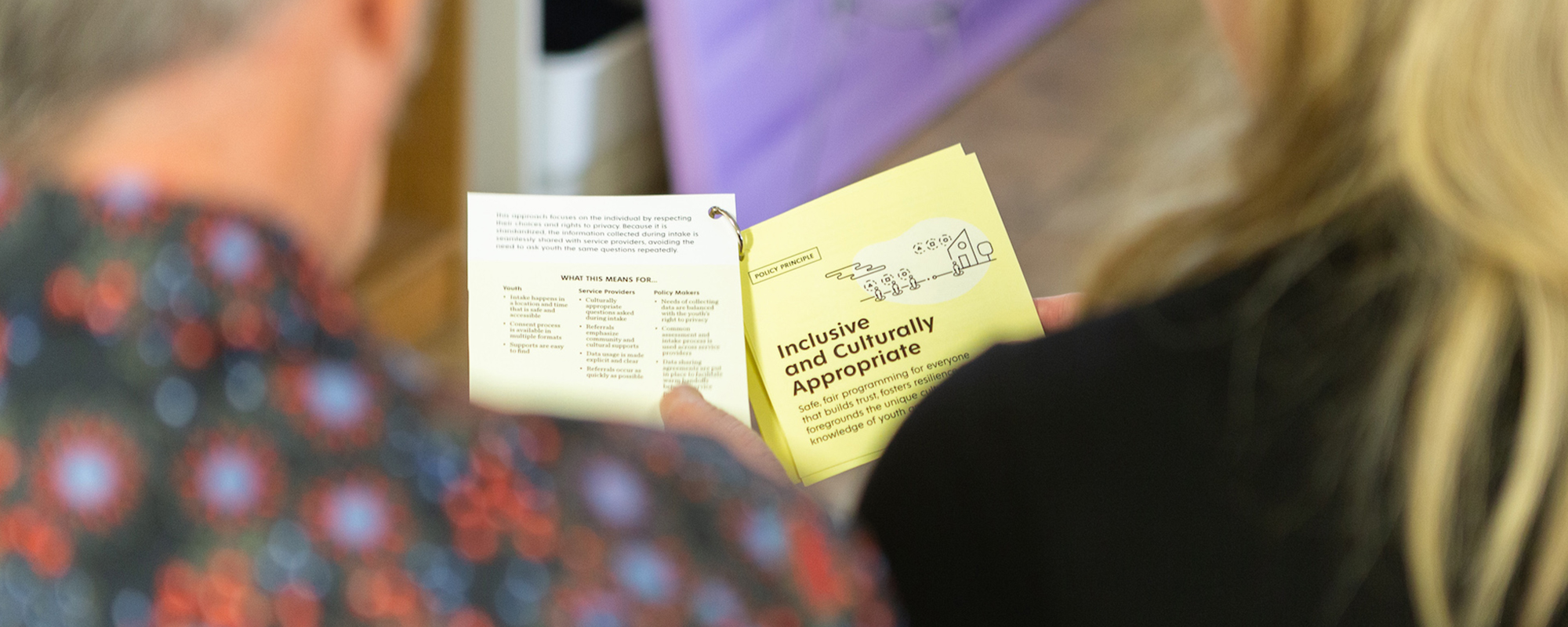
Work Bridgeable
A design-based approach to youth homelessness policy development
Problem
How might a design-based approach improve the policy development process for youth homelessness prevention?
Solution
A school-based service that simulated prevention-based policy in practice and uncovered real-world policy implications
Impact
Recognized as one of three "game-changers" in the City of Hamilton's efforts to address homelessness
Author
- Bridgeable
Client
- Making the Shift Youth Homelessness Demonstration Lab
A paradigm shift in our response to homelessness
Right now, governments and service agencies across Canada are taking a hard look at what it will take to end and prevent homelessness. In the past, efforts have focused on providing supports and services only when someone has become “homeless enough.”
Today, there is greater recognition that more needs to be done upstream—at home and in school—to prevent homelessness from occurring in the first place. This shift from a reactive to a proactive approach received a big boost in 2019 when the Government of Canada legislated the right to housing.
When it comes to youth homelessness, a different approach is needed. Young people often do not have the same life skills and experience as adults. At the same time, they are grappling with the ups and downs of teenage life. And young people from marginalized communities face even greater barriers, including racism, transphobia, and sexism.
The Roadmap for the Prevention of Youth Homelessness, published by the Canadian Observatory on Homelessness (COH) and A Way Home Canada (AWHC), lays out an innovative path forward to address youth homelessness. The Roadmap calls for the implementation of Duty to Assist, a rights-based approach to youth homelessness prevention.
In a future with Duty to Assist, local governments have a legal obligation to end youth homelessness, and young people will have legal recourse if their housing rights are violated. This marks a fundamental shift from where we are today.
Interviewing
22
interviews with youth and professional stakeholders
Participation
23
stakeholders at co-creation workshop
Prototyping
15
hours community-based prototyping
Conceptualization
5
service concepts with storyboards
Simulating policy in practice
Policy is notoriously difficult for service providers to implement on the ground. What will Duty to Assist look like in practice? How might we anticipate unintended consequences of this policy? To answer these questions, we partnered with Making the Shift Youth Homelessness Demonstration Lab, led by COH and AWHC—leading experts in homelessness and in policy development—and set out to design a service that would simulate the policy in practice.
To help prepare service providers for what this change might involve, and to build an inspirational narrative that stakeholders can rally around, we spent 14 weeks in the City of Hamilton researching, prototyping, co-creating, and refining key elements of a service built on the foundations of the proposed Duty to Assist policy.
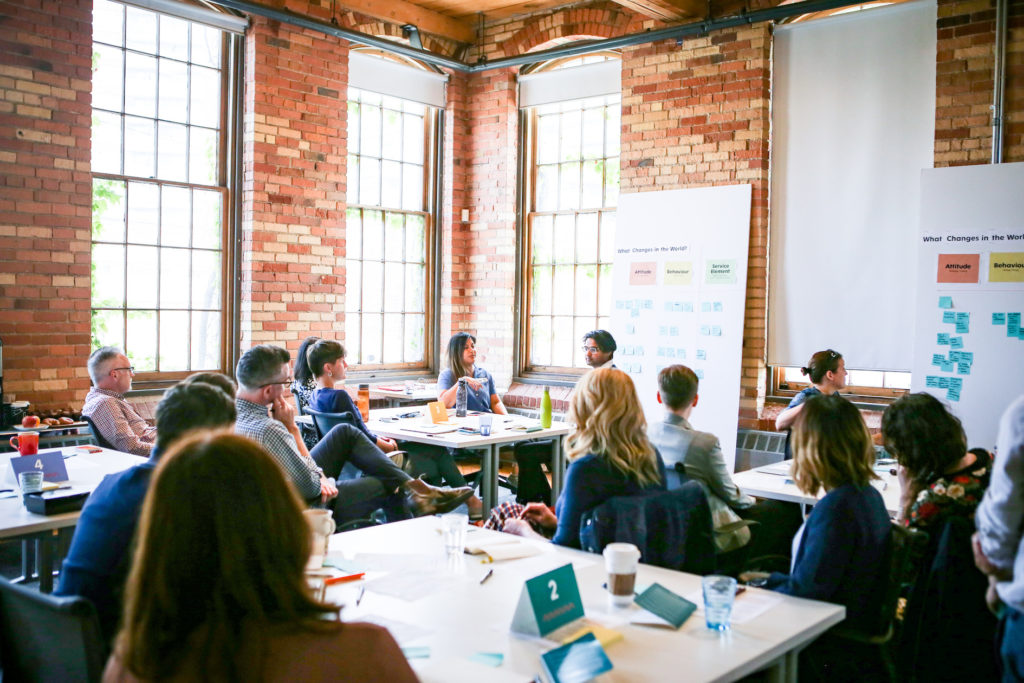
We took a human-centred design approach, grounded in the principles of anti-oppression. The voices of youth with lived experience of homelessness guided all processes and outputs of our work, with the support of the Hamilton Regional Indian Centre and the Street Youth Planning Collaborative.
Home is more than a physical space
To explore the core needs of the youth and service providers who would be most affected by the introduction of Duty to Assist, we conducted research with youth experts with lived experience of homelessness and professionals who worked in the field.
We used an arts-based approach to give the youth participants control over how they told their story, inviting youth experts to make art that represented what “home” means to them. Their artwork evolved into a powerful storytelling tool, guiding the youth interview process and conveying complex needs to the other stakeholders.
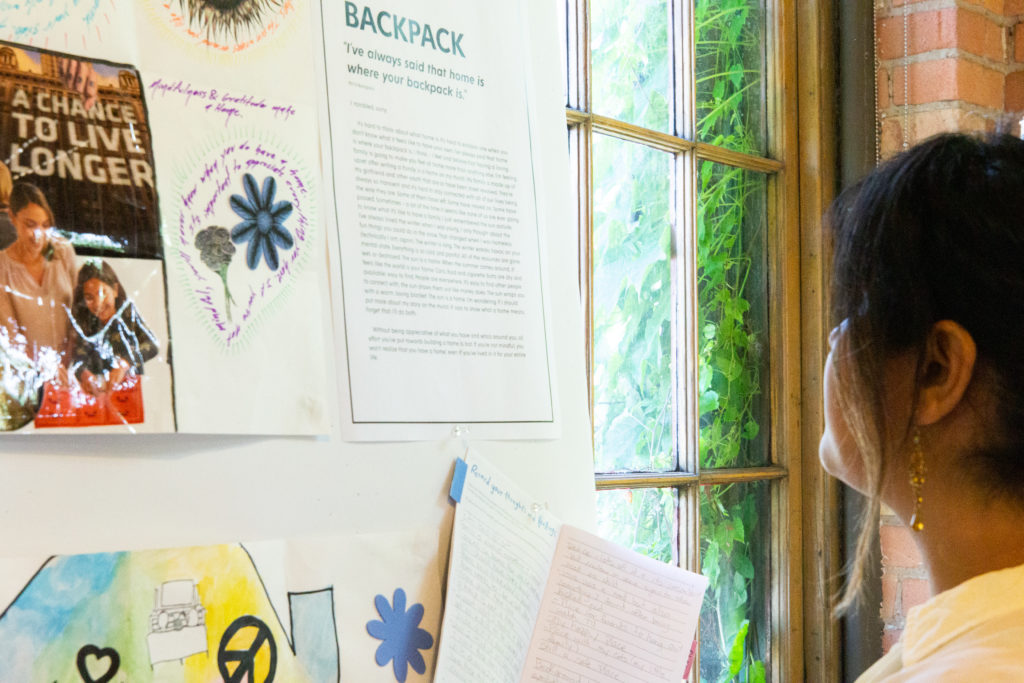
Following this, we conducted semi-structured interviews with the same youth experts, as well as with professionals from across the housing and homelessness sector, to understand diverse perspectives on the needs and opportunities presented by the introduction of Duty to Assist.
A key insight gained through our research was that home is much more than a physical place. Home is a state of mind—a lifelong journey of growth, opportunities to thrive, and connections to community.
We heard loud and clear that getting the policy and practice of Duty to Assist right means helping young people speak up, find a community to connect with, and gain access to the tools they need to tackle real-life problems. We also heard that if these supports weren’t offered in school, they would be too late. With these lessons in mind, we entered the next phase of our project, stakeholder co-creation, with schools in mind.
"A house is not necessarily a home."
- Youth expert
Co-creating youth homelessness prevention
To design school-based service concepts for youth in the City of Hamilton, we brought together policy experts and frontline staff from the school, homelessness, and social services sectors. Stakeholders sketched their ideas and identified partners within the existing community who would be key to successful implementation. We then built out these co-created concepts in more detail, prototyping them using storyboards to illustrate how the service would be experienced by youth and service providers.
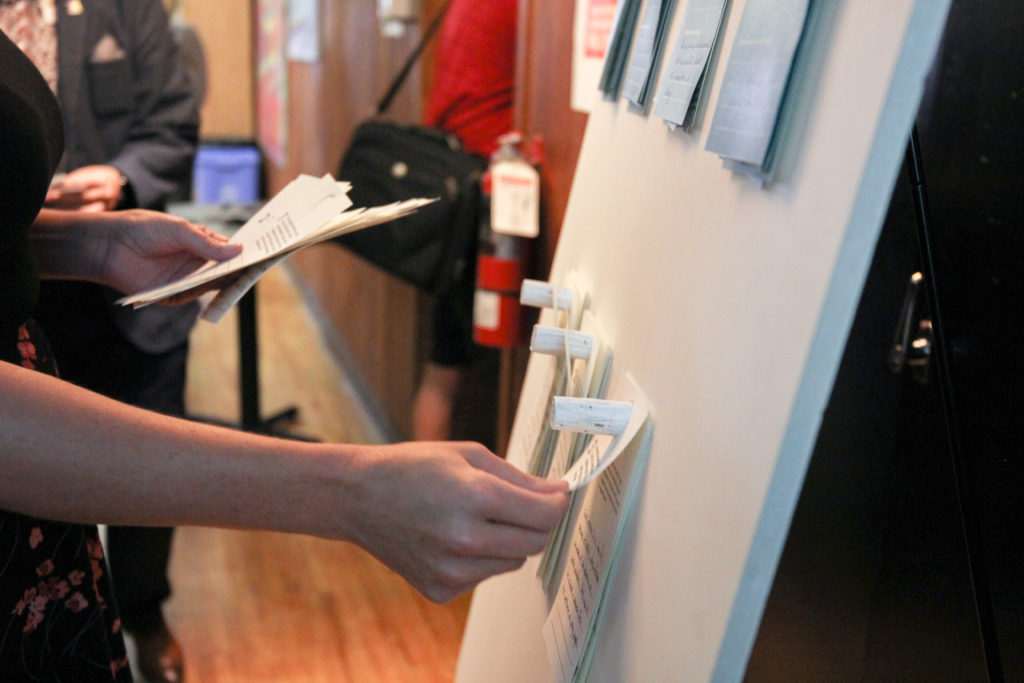
Designing in the social service space requires flexibility and a willingness to change directions to accommodate the needs of those using the service and those who are providing it on the front lines. With this in mind, we hosted community-based “design jams” to present the service concepts to youth and service providers and sketch out refinements based on their feedback. This iterative loop of sketching and refinement in response to feedback received allowed us to quickly test out new ideas with youth and service providers, while incorporating their suggestions in real time.
PluggedIn: A prevention-based service for schools
Together, our stakeholders—from youth experts to professionals working in policy and the social services sector—co-created PluggedIn: a vision of what a school-based service could look like in a world with Duty to Assist.
PluggedIn represents a vision of our future where school is more than a place to learn—it is the heart and soul of the community. It brings to life our vision of what a school-based service strategy could look like in a world where Duty to Assist is law.
PluggedIn: Teacher and Student Experiences from Bridgeable on Vimeo.
PluggedIn is a four-pronged service concept designed to support the successful implementation of Duty to Assist in schools. In a school with PluggedIn, youth feel their identities are celebrated, know their rights, and know how to find support. Staff and teachers engage in real-world training to build empathy for their students and to know the steps they need to take to help those who may be at risk of becoming homeless. AI-driven digital support provides a friendly messaging interface, connecting staff and students to community resources. And partnerships with community organizations make it possible for youth to get access to the supports they need at school.
You can read more about PluggedIn in our final project report.
Schools are the best place to prevent homelessness or to make sure youth aren't being abused or in unsafe housing, sick, or malnourished. It is the perfect place to capture the risks for anything. Because they're there. And if they're not, you have to find out why they're not there.
- Youth expert
Surfacing policy implications through design
Duty to Assist relies on legislation that protects the housing rights of young people while giving them legal recourse if these rights are violated. But it’s about more than legislation. It’s fundamentally about creating a set of policies, practices, and services designed to retool existing systems, sectors, and agencies to be prevention-focused.
Bridgeable’s community outreach and engagement on this project mobilized youth and professionals from diverse community organizations to work together and shift their mindsets toward prevention models, like Duty to Assist, to end youth homelessness.
By simulating service delivery, we uncovered elements of the proposed policy that may result in unintended negative consequences—for example, that conscious and unconscious biases may result in Indigenous youth being disproportionately singled out as being at risk of homelessness. Insights such as this uncovered during our research and co-creation with youth and community stakeholders enabled us to advance strategic recommendations to refine and improve the policy. New partnerships emerged in the City of Hamilton, and planning for demonstration projects is underway to implement and evaluate our service strategy.
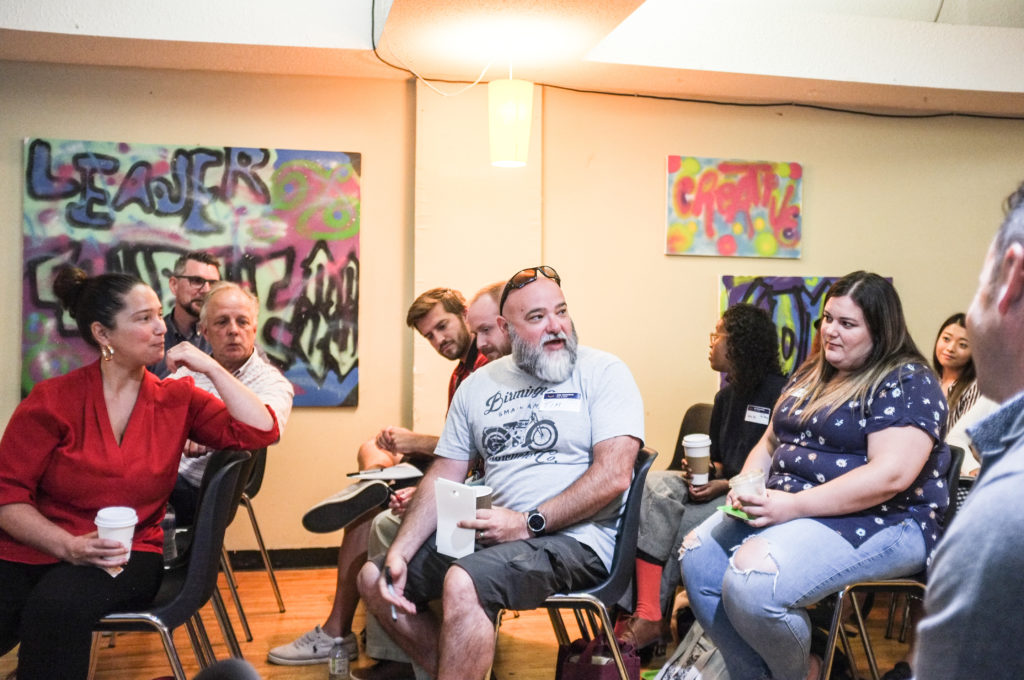
Design has a valuable role to play in this work going forward. Prototyping, in particular, is useful for testing key elements of policy to identify opportunities to improve outcomes and address unintended consequences. We look forward to a future with policies in place to end youth homelessness by fostering self-determination in youth, celebrating their unique identities, and connecting them to community.
Our work marks a paradigm shift in how youth homelessness has historically been addressed—from an environment in which accessing high-quality and secure housing is an invasive, traumatic process to one in which investment in proactive upstream services focused on mediation and strengths-based prevention is the new norm.
"I want to thank you for demonstrating true allyship in walking alongside us in this work."
Shannon Murphy
Provincial Manager, Ontario Indigenous Centre of Excellence
Author
- Bridgeable
Client
- Making the Shift Youth Homelessness Demonstration Lab